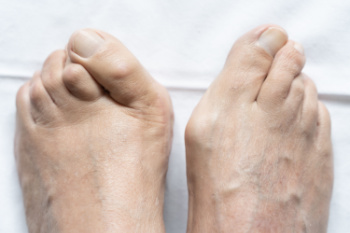Unraveling the Mystery of Bunions
Tuesday, 27 February 2024 00:00
Hallux valgus, commonly known as a bunion, is a medical condition that affects the joint at the base of the big toe. This condition occurs when the big toe deviates towards the smaller toes, causing a bony protrusion on the side of the foot. Bunions can result from various factors such as genetics, improper footwear, and structural foot abnormalities. Symptoms of hallux valgus include pain, swelling, and redness around the big toe joint, often aggravated by wearing tight or ill-fitting shoes. As the bunion progresses, it may lead to difficulty in finding comfortable footwear, corns or calluses, and restricted joint movement. While conservative measures like wearing proper footwear and orthotic inserts may provide relief, severe cases may require surgical intervention to correct the deformity and alleviate symptoms. Understanding hallux valgus and its symptoms is critical for early intervention and effective management, promoting foot health and overall well-being. If you have developed a bunion, it is strongly suggested that you consult a podiatrist who can offer you effective relief methods.
If you are suffering from bunions, contact one of our podiatrists of Bazzi Podiatry. Our doctors can provide the care you need to keep you pain-free and on your feet.
What Is a Bunion?
A bunion is formed of swollen tissue or an enlargement of boney growth, usually located at the base joint of the toe that connects to the foot. The swelling occurs due to the bones in the big toe shifting inward, which impacts the other toes of the foot. This causes the area around the base of the big toe to become inflamed and painful.
Why Do Bunions Form?
Genetics – Susceptibility to bunions are often hereditary
Stress on the feet – Poorly fitted and uncomfortable footwear that places stress on feet, such as heels, can worsen existing bunions
How Are Bunions Diagnosed?
Doctors often perform two tests – blood tests and x-rays – when trying to diagnose bunions, especially in the early stages of development. Blood tests help determine if the foot pain is being caused by something else, such as arthritis, while x-rays provide a clear picture of your bone structure to your doctor.
How Are Bunions Treated?
- Refrain from wearing heels or similar shoes that cause discomfort
- Select wider shoes that can provide more comfort and reduce pain
- Anti-inflammatory and pain management drugs
- Orthotics or foot inserts
- Surgery
If you have any questions, please feel free to contact one of our offices located in Detroit, West Detroit, Northwest Detroit, Sterling Heights, Hamtramck, Dearborn Heights, Madison Heights, Redford, and Livonia, MI . We offer the newest diagnostic and treatment technologies for all your foot care needs.




